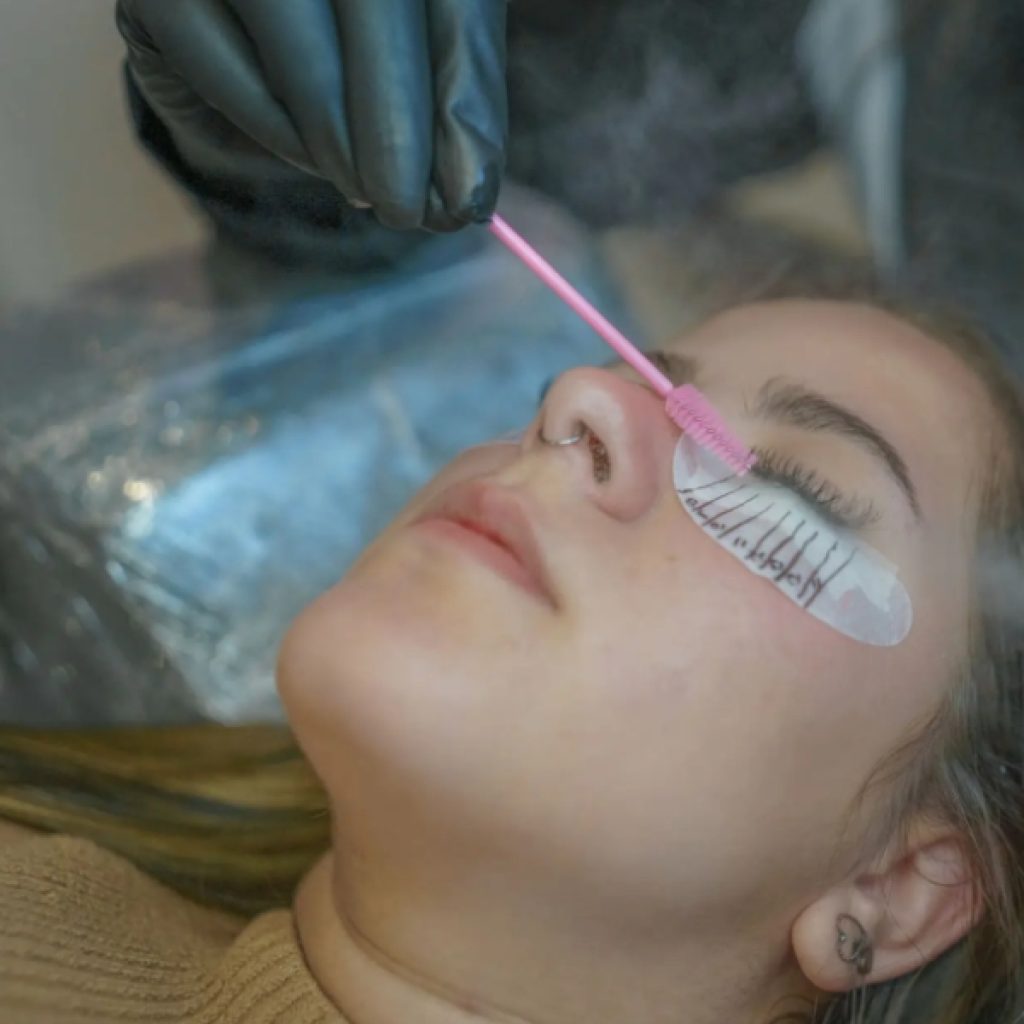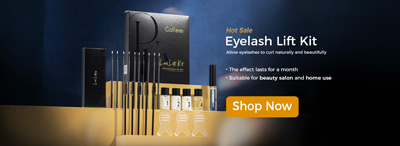Proper lash care is essential for maintaining the health and beauty of your eyelashes. Well-cared-for lashes not only enhance your overall appearance but can also improve the expressiveness of your eyes, making them look brighter and more vibrant. However, for individuals with oily eyelids, achieving those beautiful lashes can be more challenging due to the unique difficulties associated with excess oil.
Oily eyelids can lead to a range of common cosmetic issues. Mascara can easily smudge, leaving unsightly marks on your skin. Eyelash extensions can struggle to adhere properly, resulting in quicker loss and requiring more frequent touch-ups. Additionally, the accumulation of oil increases the risk of infections, such as styes, which can further complicate lash care. These challenges can be frustrating, especially for those who desire a flawless eye look.
This article aims to equip you with effective tips and solutions for lash care specifically tailored for those with oily eyelids. By understanding people unique requirements and implementing these strategies, they can embrace beautiful, healthy lashes to elevate overall beauty.
Understanding Oily Eyelids
1. Definition and Causes of Oily Eyelids
Oily eyelids occur when the skin surrounding the eyes produces excess sebum, resulting in a shiny and reflective appearance. This condition can be influenced by several factors:
Hormonal Factors: Fluctuations in hormones, often due to the menstrual cycle or hormonal disorders, can trigger increased oil production.
Environmental Influences: High humidity and extreme heat can easily exacerbate oiliness, leading to more pronounced oily eyelids.
Skin Types: People with oily or combination skin types frequently experience oiliness in the eyelid area compared to those with dry skin. Additionally, stress, poor diet, and lack of hydration can also contribute.
2. Common Issues Associated with Oily Eyelids
The oily environment created by excessive sebum can contribute to various cosmetic challenges:
Mascara Smudging: The excess oil can cause mascara to slide off easily, creating an undesirable "panda eyes" effect by midday.
Eyelash Extensions Retention Problems: Oily eyelids pose significant challenges to the adhesive's ability to bond properly, which can lead to premature loss of expensive lash extensions.
Risk of Infection: The buildup of oil can easily attract dirt and bacteria, heightening the risk of eye infections like annoying styles.

Best Practices for Lash Care
1. Cleansing
Importance of a Gentle Eye Cleanser: It's vital to cleanse regularly to remove excess oil, makeup, and impurities without irritating the sensitive skin around the eyes.
Recommended Ingredients: Look for oil-free, non-comedogenic cleansers that effectively remove makeup without clogging pores. Effective options include micellar water and gentle foaming cleansers.
Cleansing Routine for Oily Eyelids: Establish a cleansing routine by washing your eyelids twice a day—once in the morning and once before bedtime—to keep oil production in check.
2. Conditioning
Benefits of Lash Serums and Conditioners: Lash serums can nourish and strengthen your lashes while promoting healthy growth, making them resilient to environmental stresses.
Recommended Products for Oily Eyelids: Choose lightweight, oil-free lash serums that are specifically formulated for oily skin to provide the necessary nutrients without adding excess oil.
DIY Conditioning Options: Natural remedies like aloe vera gel or castor oil can nourish lashes effectively. Use them sparingly to avoid excess oil buildup.
3. Makeup Application Tips
Choosing the Right Mascara: Waterproof formulas are ideal for preventing smudging, as they resist moisture and oil better than regular mascaras.
Techniques for Application to Minimize Smudging: Apply mascara in thin layers and allow each layer to dry before adding more to help reduce the chance of smudging.
Best Practices for Eyeliner and Eyeshadow on Oily Lids: Opt for gel or liquid formulations, which are less likely to smudge. Investing in a good primer can also help create a barrier that keeps makeup in place.
4. Lash Extensions & Treatments
Tips for Maintaining Lash Extensions on Oily Eyelids: Prior to applying lash extensions, ensure thorough cleansing to remove oils that can hinder adhesion.
Recommended Adhesives and Products: Look for waterproof and specialized adhesives created for oily skin. These formulas are designed to enhance retention and minimize issues.
Alternatives to Consider: If retention remains a challenge, semi-permanent mascara can be an effective alternative, providing a long-lasting look without the complications of traditional extensions.
Additional Tips for Managing Oily Eyelids
1. Lifestyle Adjustments
Diet and Hydration Impact on Skin Oiliness
A well-balanced diet plays a crucial role in managing oil production in the skin. Foods rich in antioxidants, vitamins, and minerals from fruits and vegetables can help improve skin health. Here are some dietary considerations to keep in mind:
Increase Antioxidants: Foods such as berries, leafy greens, and nuts are packed with antioxidants that combat oxidative stress, helping maintain a balance in skin oil production.
Healthy Fats: Incorporating sources of omega-3 fatty acids (like salmon, walnuts, and chia seeds) can help reduce inflammation and improve skin texture.
Avoid Processed Foods: Cut back on sugary and highly processed foods, which can lead to hormonal imbalances and increased sebum production.
Stay Hydrated: Drinking ample water is vital for maintaining skin hydration. Aim for at least 8 glasses of water daily, and consider herbal teas or water-rich fruits like cucumbers and watermelon to boost hydration.
Limit Dairy and High Glycemic Index Foods: Some individuals find that dairy products and high-glycemic foods (like white bread and sugary snacks) can increase oiliness. Monitor your diet to see how these foods affect your skin.
The Role of Skincare Routine
An effective skincare routine tailored for oily eyelids can significantly impact oil levels and overall skin condition. Here are some products and practices to include:
Use a Suitable Toner: A toner can help balance oil levels without stripping the skin of necessary moisture. Ingredients such as witch hazel, tea tree oil, or rose water are excellent choices, as they can provide a gentle astringent effect and help reduce excess oil.

Lightweight Moisturizers: Opt for oil-free, non-comedogenic moisturizers that provide hydration without clogging pores. Gel-based moisturizers are excellent for oily skin since they hydrate while feeling light and refreshing.
Exfoliation: Gentle exfoliation 1-2 times a week can help remove dead skin cells, which can contribute to clogged pores and additional oiliness. Look for exfoliants with salicylic acid or glycolic acid, known for their ability to penetrate pores and help regulate oil production.
Sun Protection: Incorporate a lightweight, oil-free sunscreen into your morning routine to protect your skin from harmful UV rays, which can exacerbate oily skin issues. Look for formulations labeled "non-comedogenic".
2. Professional Treatments
Consulting a Dermatologist or Esthetician
If you are experiencing persistent oily eyelids despite home care efforts, consulting a dermatologist or esthetician can provide invaluable insights:
Identifying Underlying Causes: A skincare professional can assess your skin type, lifestyle factors, and any underlying conditions that may be contributing to your oiliness. They can perform a thorough examination to rule out hormonal imbalances or skin disorders that might require medical intervention.
Customized Product Recommendations: Based on your skin's unique needs, professionals can recommend suitable products and ingredients that align with your specific condition—be it oily, combination, or acne-prone skin.
Options Such as Chemical Peels or Facials
Consider incorporating professional treatments into your skincare regimen to effectively manage oily eyelids:
Chemical Peels: These treatments involve applying a mild acid to the skin, promoting exfoliation and cell turnover. Chemical peels can reduce oiliness, unclog pores, and improve skin texture over time. Depending on your skin type and concerns, dermatologists can customize the strength and type of peel used.
Facials: Regular facials—especially those targeting oily or acne-prone skin—can help deeply cleanse, exfoliate, and hydrate the skin. Aesthetician-led facials often include steam, extraction, and masks formulated to absorb excess oil and prevent breakouts.
Frequency of Treatments: Depending on your skin’s sensitivity and condition, these treatments can be done every 4-6 weeks for optimal results, allowing your skin to heal and rejuvenate thoroughly between sessions.
Common Myths and Misconceptions
Myth: You Shouldn't Moisturize Oily Skin
Even oily skin benefits from proper hydration. It’s essential to use the right moisturizer to help balance oil production without exacerbating the issue.
Myth: Mascara Is Ineffective on Oily Eyelids
With the right products and application techniques, achieving a long-lasting look is indeed possible, even for those struggling with oily eyelids.
Clarifying the Truth Behind These Misconceptions
Understanding these common myths is vital for developing an effective and personalized lash care routine that meets your unique skin care needs.
Conclusion
Taking the time to care for your lashes can yield significant benefits for their health and appearance, particularly for those dealing with oily eyelids. Explore various products and innovative techniques to discover what works best for you, ultimately crafting a personalized routine that aligns with your unique skin type and specific needs. Engage with your audience by encouraging them to share their challenges and successes in managing lash care for oily eyelids.
By following these comprehensive lash care tips, individuals with oily eyelids can achieve beautiful, long, and healthy lashes, enhancing their overall look and confidence. Implementing a tailored routine ensures that your eyelashes remain vibrant, strong, and well-maintained.







